Allion Labs | Cache Her
Wi-Fi technology has been widely applied to enable a massive web of wirelessly connected devices spanning from smartphones to car head units. As users demand a more personalized smart driving experience, Wi-Fi technology has an indispensable role to play in the automotive ecosystem. Here we list a few popular in-vehicle Wi-Fi applications:
1. Wireless Projection
2. CarPlay and Android Auto
3. In-vehicle IoT Devices
4. Wi-Fi Internet Access

Evolution of Wireless Network Services in Vehicles
A decade ago, SIM cards were installed for the purpose of vehicle tracking, sending back the collected driving data and access to emergency services. Sim cards could not provide internet services for drivers or passengers. However, with the development of telecommunications and internet services, more services can now be available in vehicles, such as music streaming, online traffic information, and internet-based mapping applications. The IVI system along with a 4G/5G SIM card (or e-SIM) serves as a Wi-Fi hotspot to support IoT devices. The in-vehicle wireless network is able to offer endless options for entertainment and edification on the road.

The application of in-vehicle hotspots is common in public transport. For example, wireless networks have become not only a handy convenience but a necessity on high-speed trains or in long-distance buses. As for personal-use vehicles, more and more automakers have integrated wireless network services into head units. The access of in-vehicle wireless networks has become a major selling point for buyers.
Functionality and Performance Challenges Facing In-Vehicle Wireless Networks
There are many challenges involved in hardware and software design of in-vehicle wireless network applications, including:
1. The choice between 2.4 GHz and 5 GHz Wi-Fi frequency bands
2. Number of concurrently connected devices
3. Transmission speed
4. Uplink and downlink transmissions
5. Signal strength affected by the number of users
6. Interference
7. Application performance and latency
8. Compatibility
Testing on Real Devices: IVI Wireless Network Performance Comparison
Allion uses two head units with built-in hotspot capabilities to measure the performance of the in-vehicle wireless network. Figure 1 and 2 below show an example of the simulation set-up: In a sedan with 4 seats, passengers sitting in each passenger seat are using smartphones, tablets, laptops, or other mobile devices. All devices share the internet connection of the same in-vehicle wireless network.

IVI Wireless Network Performance Test Items
- Maximum Connection Test
- Maximum Throughput Test
- Airtime Fairness Test
- Range Versus Rate Test
- Spatial Consistency Test
- Multiple STAs Performance Test
- Multiple Association and Disassociation Test
- Long Term Stability Test
- AP Coexistence Test
The Google Pixel 4 mobile phone was used as the end device in all of the above-mentioned tests to avoid issues caused by using different end devices.
Comparison of Test Results
A. Maximum Connection Test
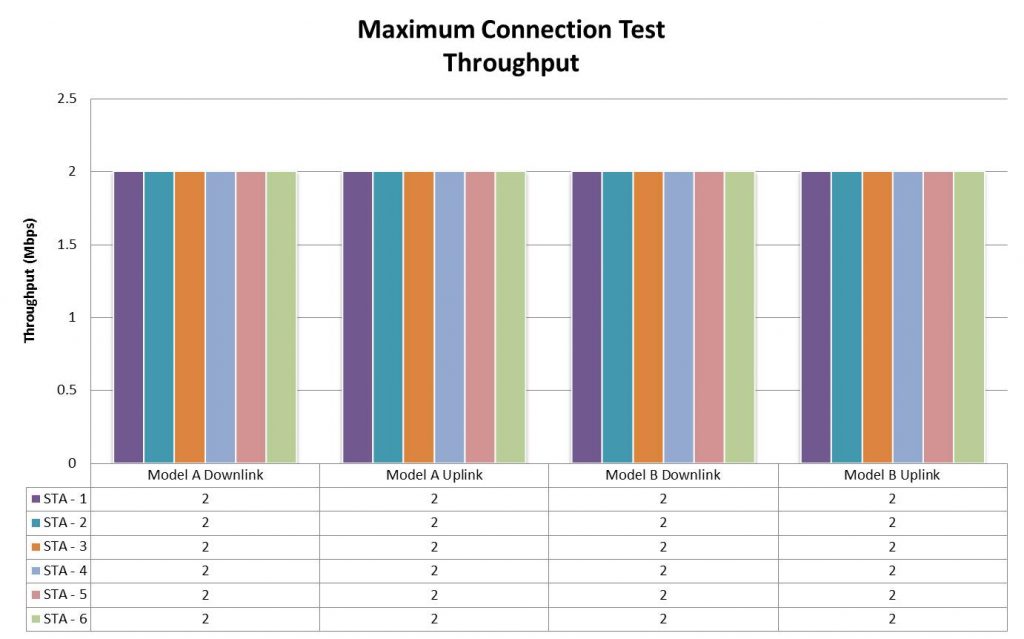
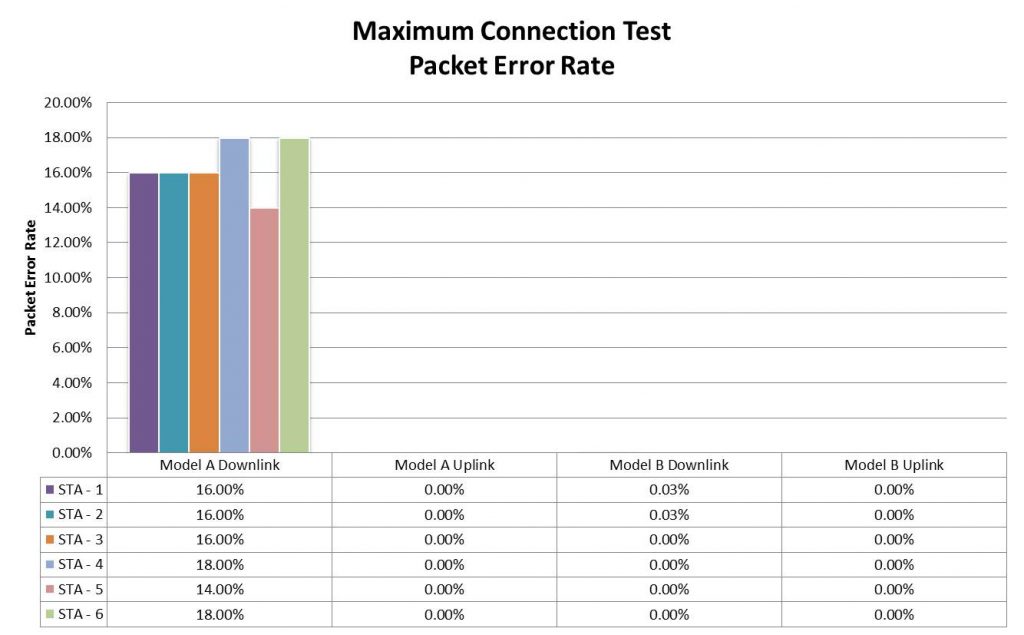
The throughput performance of both Model A and Model B was stable since the throughput rate remained at the set traffic rate (2 Mbps). Model B performed well since its packet error rates maintained at 0% most of the time for both uplink and downlink. However, during the uplink transmission of Model A, the packet error rates fell within the range between 14% and 18%. Model A uplink performance had massive room for improvement.
B. Maximum Throughput Test
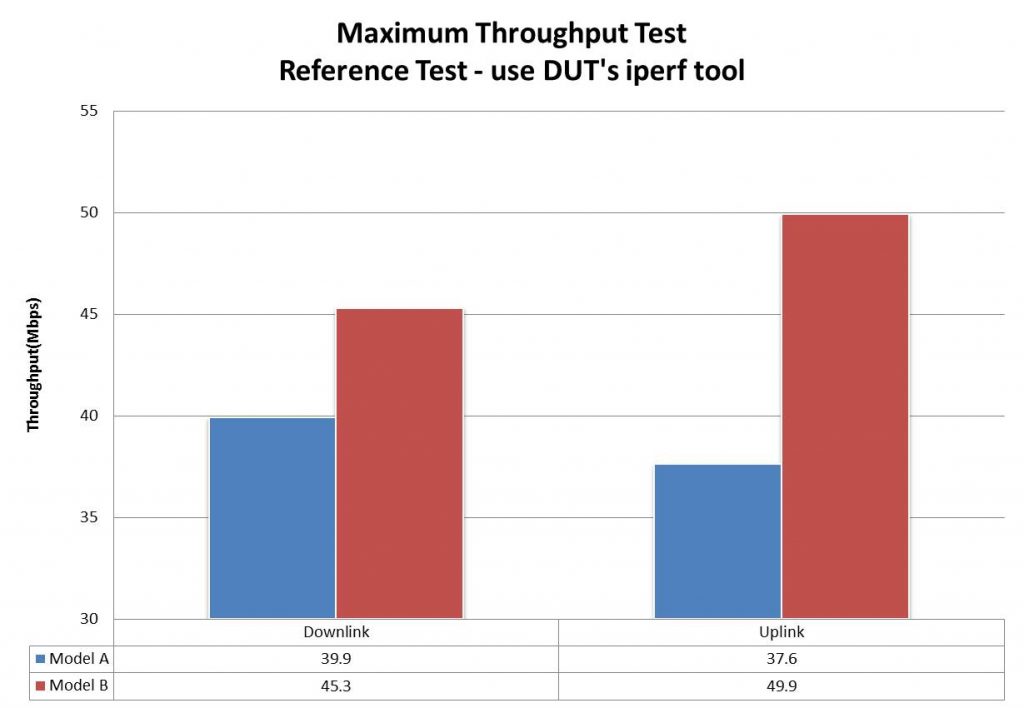
For wireless routers in general, the actual transmission speed should be about 70% to 80% of the link rate (or physical rate). The transmission rate of Model B is 45.3 Mbps, reaching the range of 70% of the link rate (65 Mbps). However, the transmission rate of Model A is only 39.9 Mbps: only 60% of the link rate (65 Mbps). Model A gave a slightly worse performance in this maximum throughput test.
C. Airtime Fairness Test
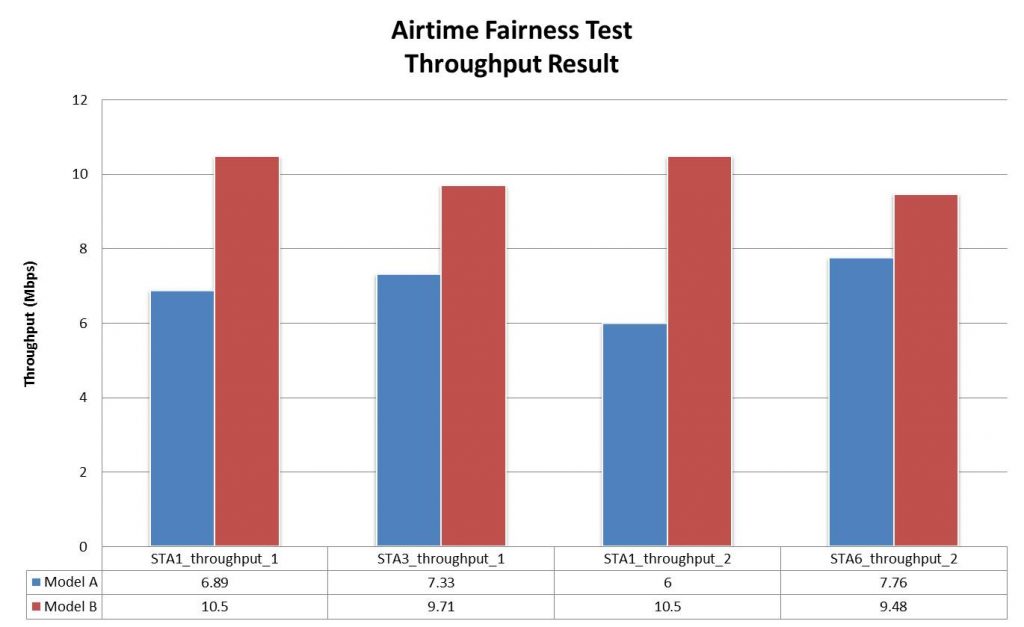
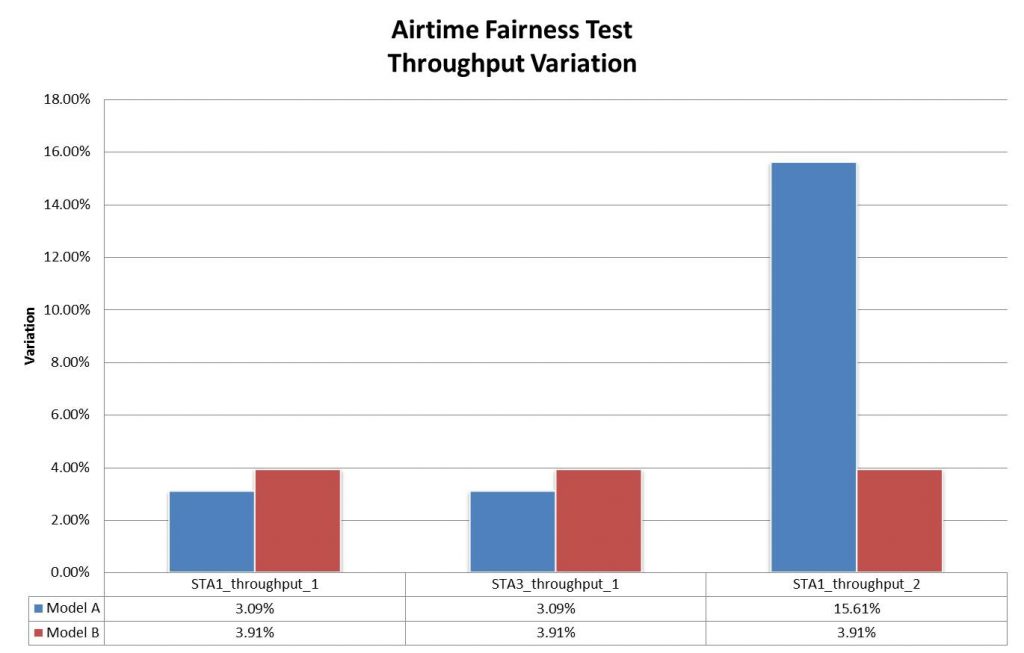
This Airtime Fairness Test verifies the capability of head units to guarantee the fairness of time and traffic allocated to end devices. The overall transmission rate of Model B is better. Even though the difference in transmission rates between Model A and Model B is less than 15%, the variation in transmission rates of Model B is smaller than that of Model A.
D. Range Verses Rate Test
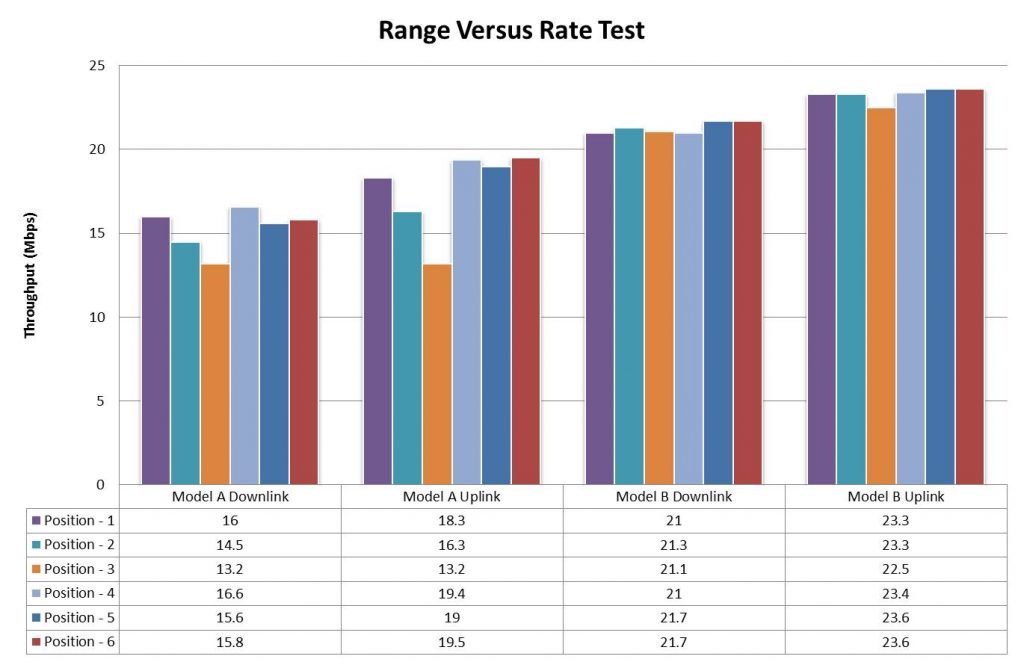
Since there is limited space in the car (less than 2 meters), the attenuation of the Wi-Fi signal is minimal. The transmission speed of Model A and Model B at each location is acceptable (approximately 10 Mbps when watching 1080P online streaming videos). In addition, the speed performance of downlink/uplink transmission at each position in Model B is better than Model A.
E. Spatial Consistency Test
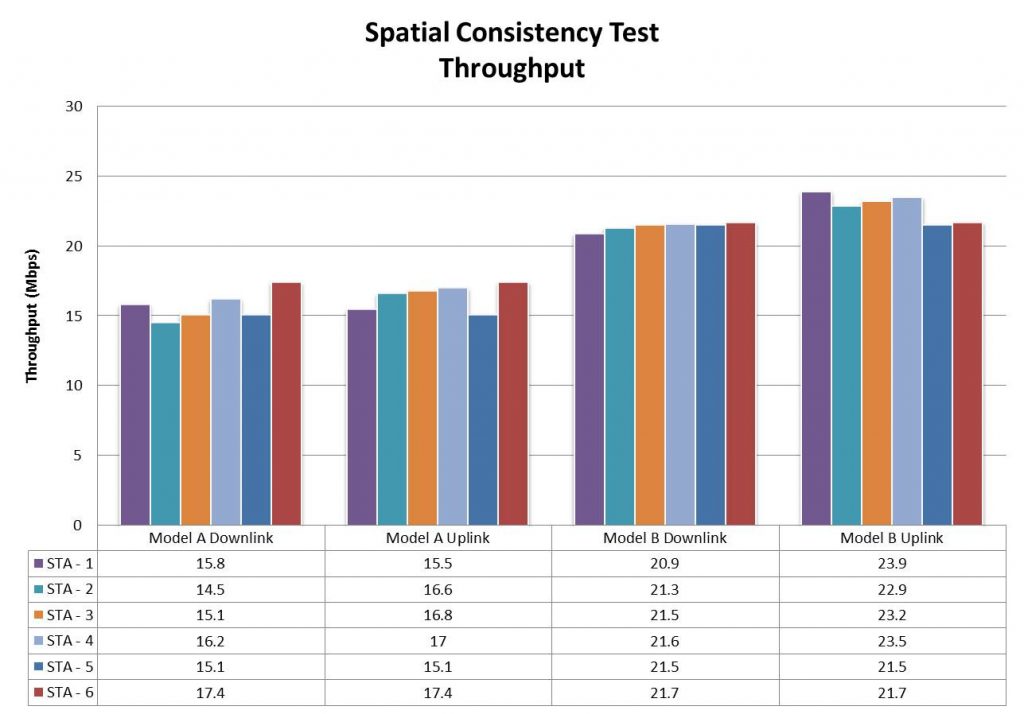
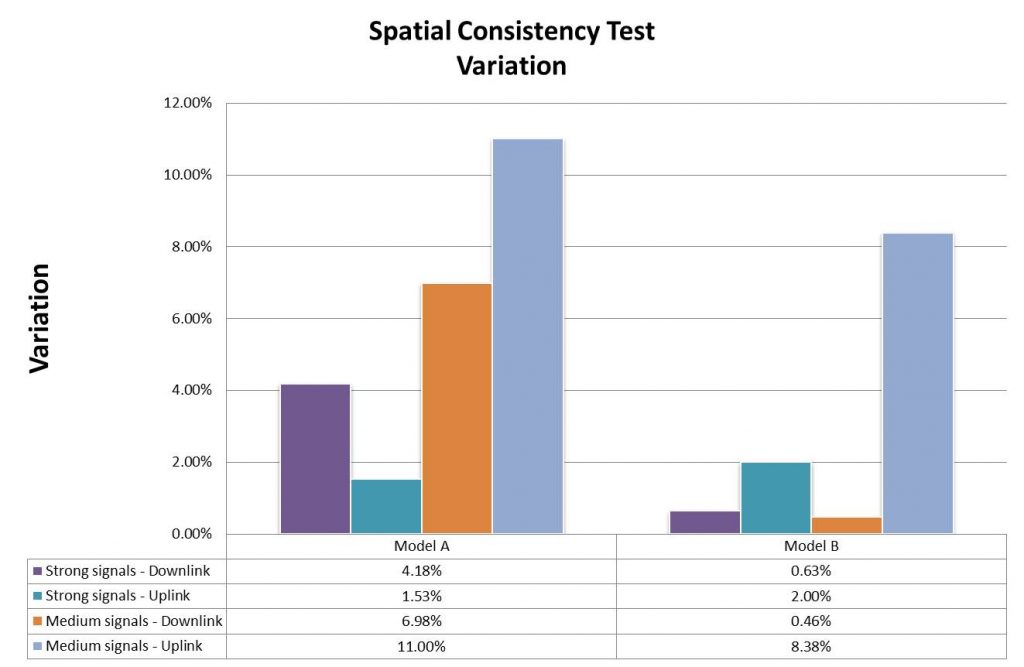
From the above experimental data, it can be seen that the downlink and uplink transmission speeds of Model B in the car are better than those of Model A. In addition, the variation of Model B is better and more stable than Model A.
F. Multiple STAs Performance Test
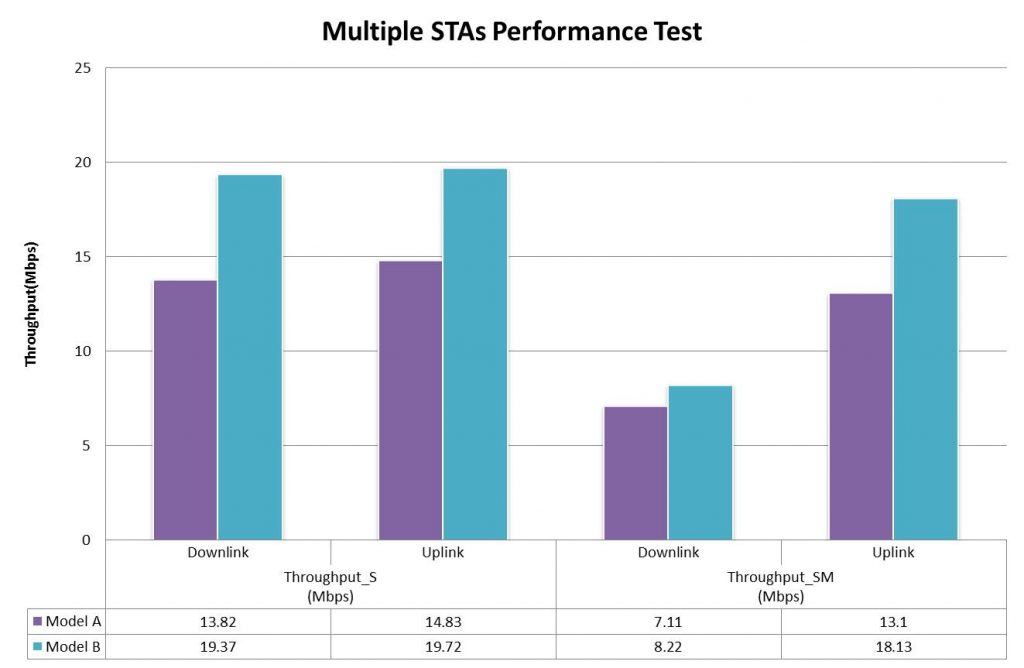
The purpose of this test is to compare the transmission speed when multiple user/clients are connected at the same time. According to the test results, the overall performance of both Model A and Model B are worse than that of a single user. The lowest transmission speed is only 7.11 Mbps and 8.2 Mbps. This transmission speed is fine for voice-only calls and regular quality video streams. However, if there are multiple users simultaneously watching video streams or one user watching on high-definition (1080P), there may be delays or bad user experience under such conditions.
G. Multiple Association and Disassociation Test
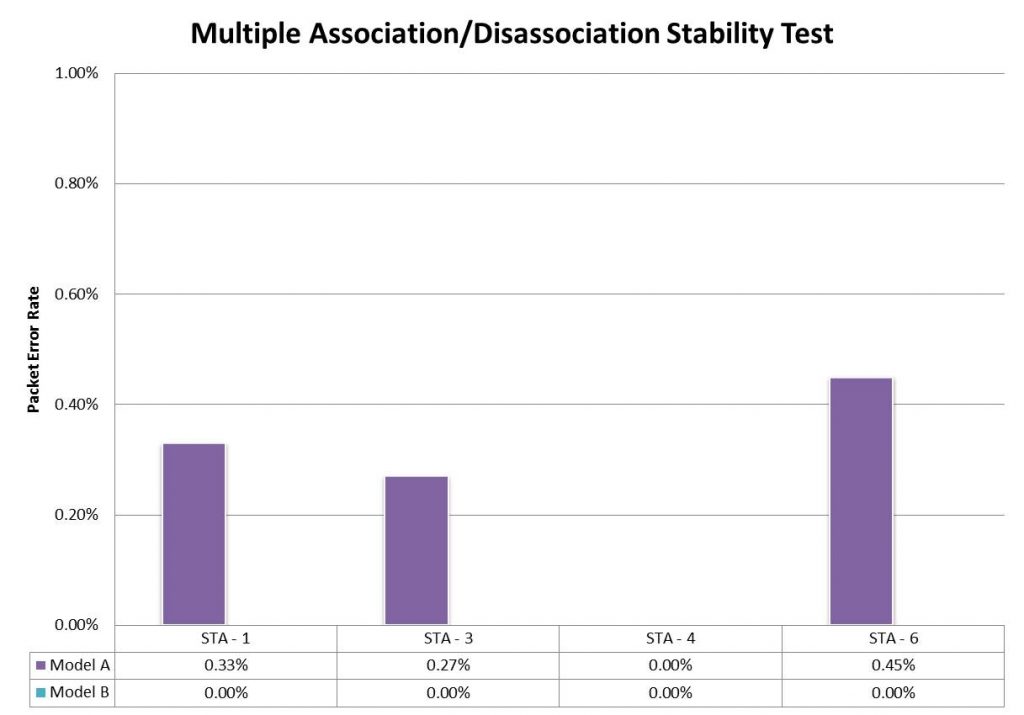
According to the test results, it can be seen that the Wi-Fi performance of Model A and Model B remains stable in the environment of continuous connection/disconnection. The performance of Model B is almost 0%, which is better than Model A.
H. Long Term Stability Test
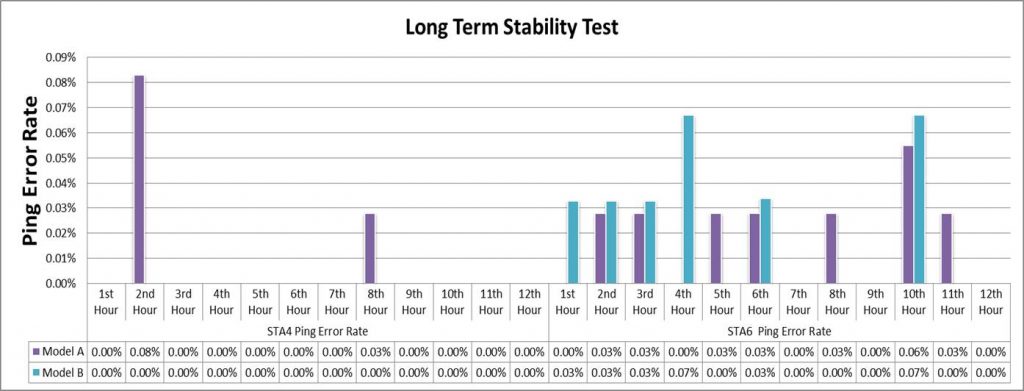
The test results show that the Wi-Fi performance of Model A and Model B are stable during a long connection (12 hours), and all packet error rates are less than 0.1%
I. AP Coexistence Test
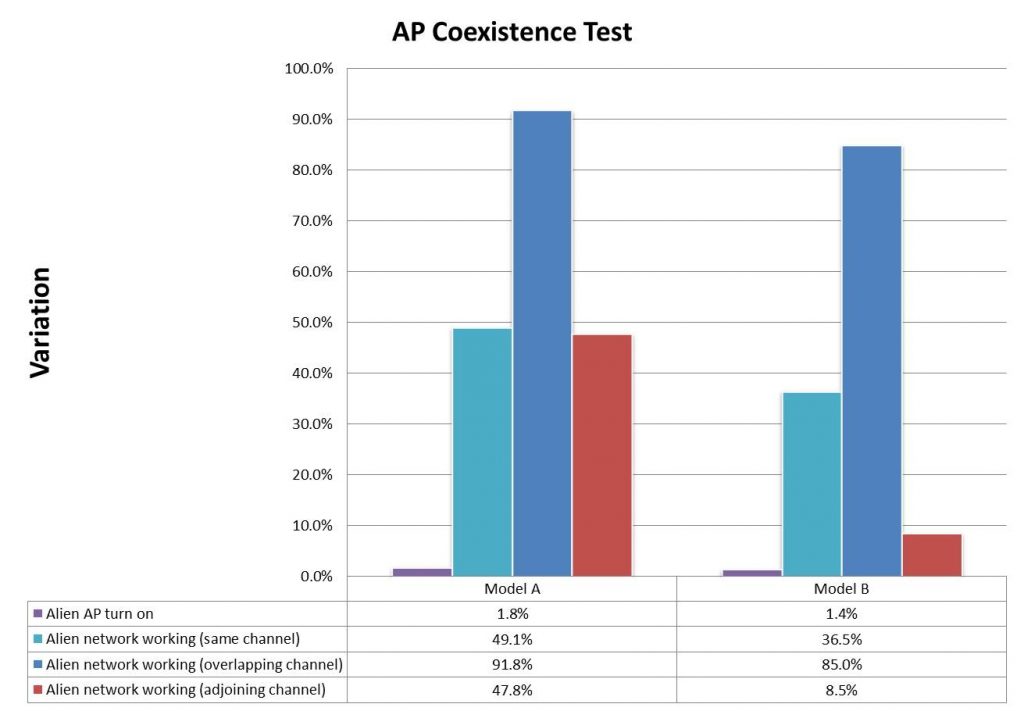
For wireless routers, environmental interference (co-channel and adjacent channel interference) has a great impact on performance, and the difference between environments with interference and environments without interference should be less than 60%. However, in the experiment, Model A and Model B have a difference in transmission speed when there is interference at the same frequency signal, which is 91.8% and 85% respectively. In other words, only 10-15% of the original speed is left. This shows that in the presence of external wireless signals, the Wi-Fi performance of Model A and Model B drops sharply, which causes buffering and latency during use.
For the convenience of comparison, we summarized the test data above in the following table. As a whole, Model B outperformed Model A.
| Item Product | Model A | Model B |
| Maximum Connection Test | Worse | Better |
| Maximum Throughput Test | Worse | Better |
| Airtime Fairness Test | Worse | Better |
| Range Versus Rate Test | Worse | Better |
| Spatial Consistency Test | Worse | Better |
| Multiple STAs Performance Test | Worse | Better |
| Multiple Association/Disassociation Stability Test | Worse | Better |
| Long Term Stability Test | Same | Same |
| AP Coexistence Test | Same | Same |
Allion Automotive Head Unit Validation
In addition to the performance tests mentioned above, Allion also provides a complete one-stop service solution for IVI systems:
1. Signal Measurement
- High-speed signal and low-speed signal
- Power signal
- Antenna and RF field type
- Customized fixtures
2. Certification
- CarPlay, Alexa
- HDMI, USB, Wi-Fi, Bluetooth®, SD, MMC
3. Wireless compatibility test (Bluetooth® and Wi-Fi)
- Mobile phones, tablets, laptops, driving recorders, navigation devices, etc.
- Different wireless module chips (Qualcomm, Broadcom, MTK, etc.)
- Different operating systems (Windows, Android, iOS, etc.)

4. Wireless Performance Test
- Maximum connection Test
- Performance during concurrent use on multiple devices
- Maximum wireless transmission speed (upload, download, simultaneous upload and download)
- Transmission speed and efficiency at different distances
- Consistency of Wi-Fi signal in the spatial domain
- Stability under long-term use
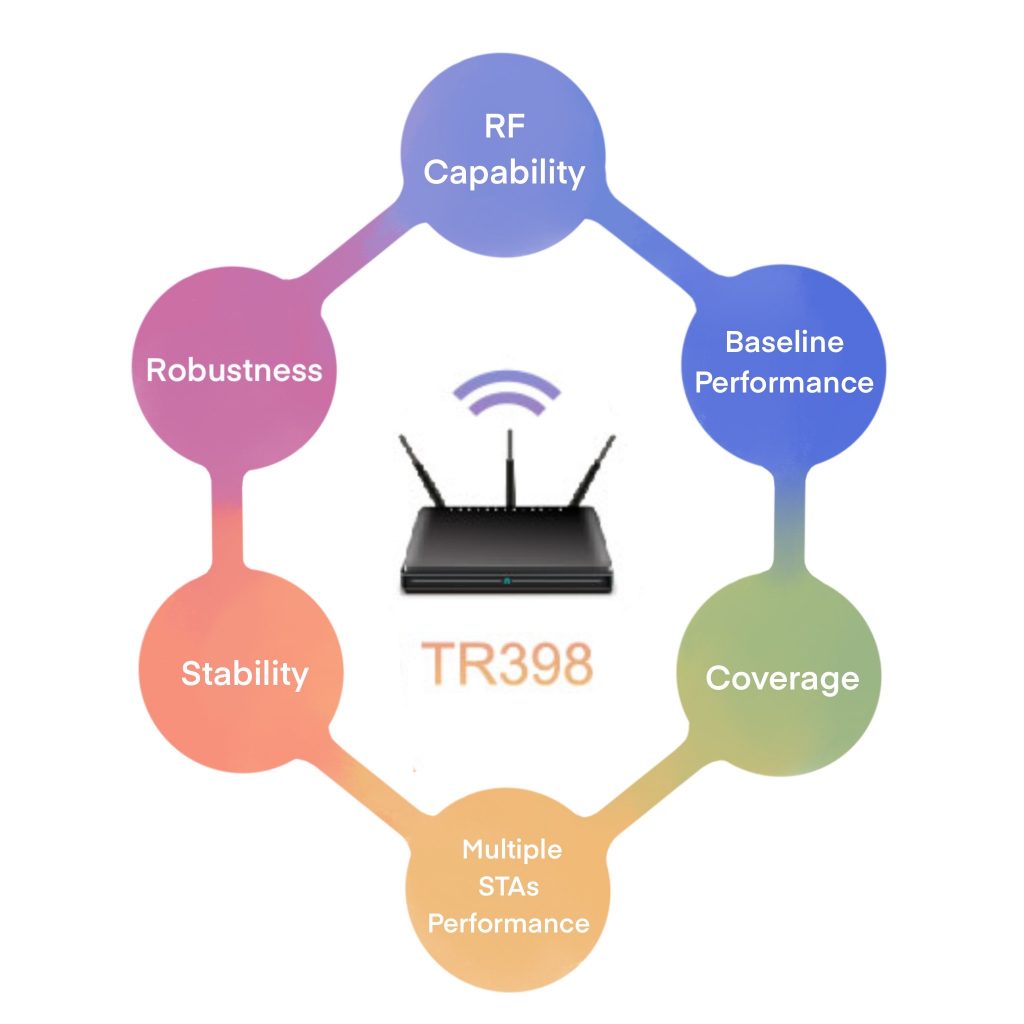
5. Real-world Interference
- Interference on the same frequency band or in adjacent frequency bands
- Background traffic interference
- Interference from other devices

6. Functionality
- Power management
- Connect/disconnect
- Multi-user connection
- Voice/video streaming and remote control
- Hands-free phone function and control
- Message operation
7. User Scenario
- Switch between multiple applications
- Movies (Iqiyi, Tencent, Youku, Youtube, Netflix)
- Audio (Radio, AUX, QQ, Spotify)
- Switch between multiple devices
- Playback operation/playback using different video file formats
- Incoming event switching (Phone, SMS)
- Out of connection range
- Other customized scenario planning and testing
Passengers use the in-vehicle infotainment (IVI) system constantly. Therefore, a high-quality and stable IVI system can ensure safe, comfortable entertainment during the drive.
Allion can become your quality goalkeeper. If you need our IVI system verification or want to consult related services, please write to: service@allion.com






































